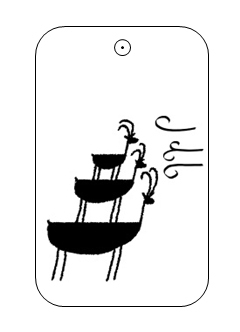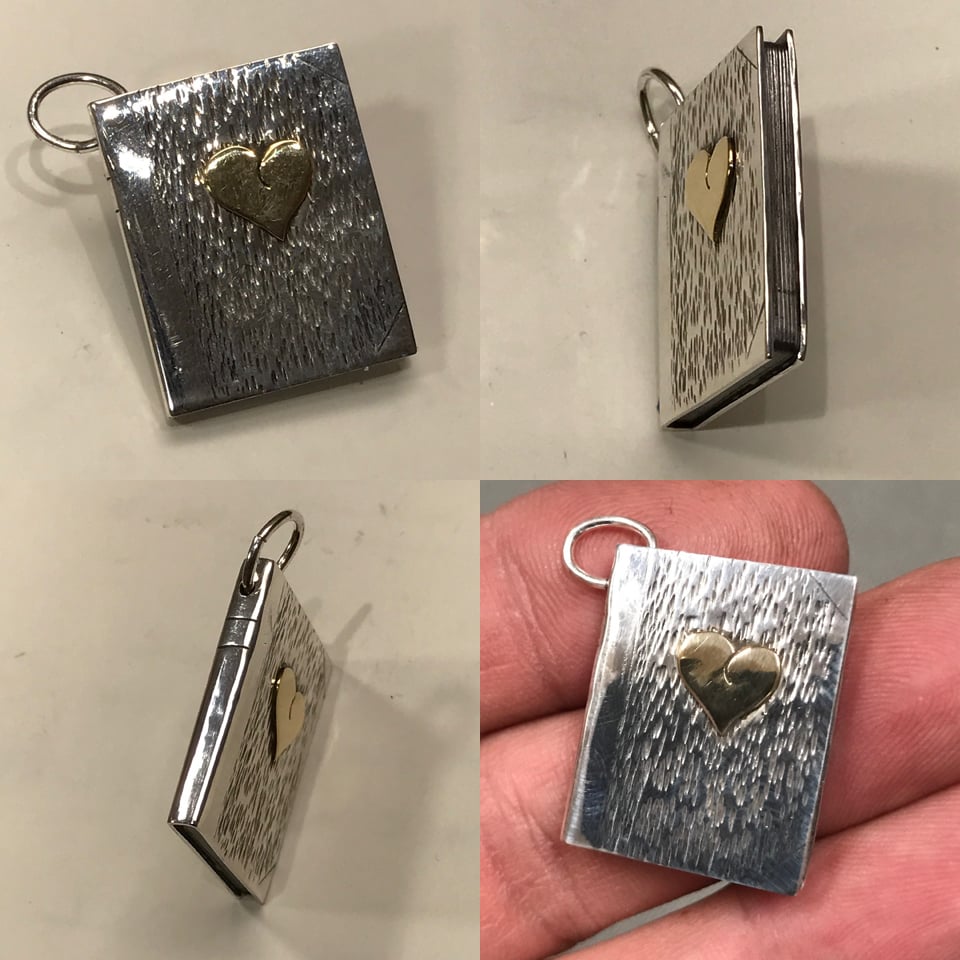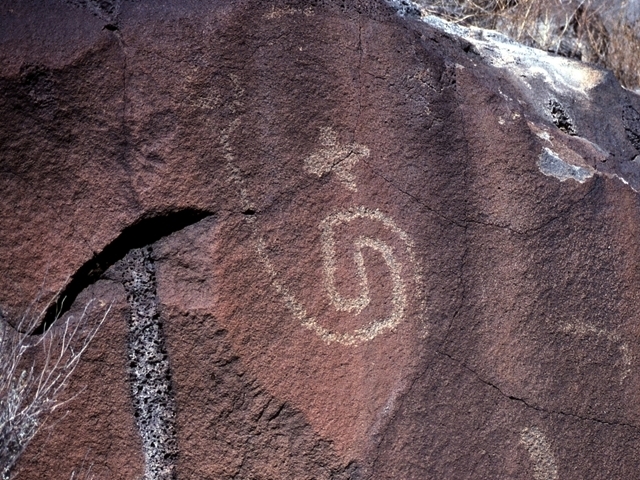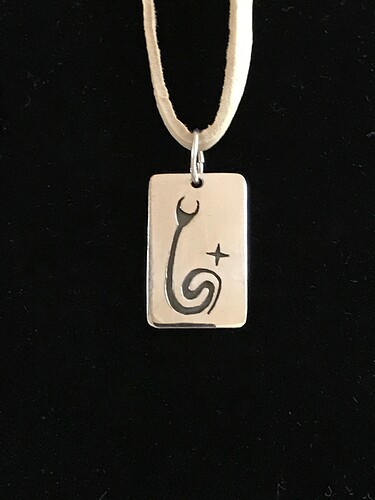Thank you so very much for sharing your process to make the conchos. I am just learning how to make things on my own. I have asked other jewelers on Instagram how they make a certain part and I most often never! receive a reply. Why the great secrecy? I was a professional chef/ pastry chef/instructor , ect and ALWAYS shared my knowledge with ANYONE who asked me questions. Many Thanks Deborah
Hi Deborah,
Why the secrecy? since no one has responded I will.
Its because they think they have a commercial advantage in their know how, and therefore dont see why they should giver it away for free.
this is standard practice in the commercial world, all big corporations as well as one man band business follow this principle.
However,heres the other side to this to compensate.
If its been done before it can be done again, if our clever enough to work out how.
so theres hope for you. As an independent, you survive or fall by
your own efforts.
Im not referring to know how in the public domain, there are hundreds of utube ,videos, books, and tutorials at courses that you can access. a lot are free as well.
The reality is Its a tough old world out there when money is involved.
To give you an example, there were 3 Co’s making a particular jewelley product.
the bigger of the 3 made an offer to the other 2 they couldnt refuse.
they took them over, and their customers, then closed them down and scrapped their equipment so they were the only maker left. It didnt effect me, as i make things others do not.
Honorable? But thats the way this commercial world is.
You decide.
Ted.
Hi Ted
Solid reply.
I was close friends with Henry Duney, a well respected and gifted jewelry artist and manufacturer. We were doing a show together and I asked, kinda offhand, how he did his signature texture (knowing full well how it was done) . I loved Henry, super straight up guy, he said it was proprietary and that was that.
Now when you look at Alec’s texture, it’s nearly identical.
Henry’s was applied (in the masters) with a hart burr, it could have been done a number of different ways, yet, though we weren’t competitors, the answer was never shared.
I grew up in that world… lots of questions , few answers. sometimes I thank it for driving me, at all times it seems stingy.
Best,
(to share)
Jim
Skipping ahead…
As I began figuring out what I most enjoy doing, I became interested in overlay. What initially excited me were geoglyphs and petroglyphs. I find these ancient works (some call them “rock art,” but that’s a different discussion/argument for a different time) particularly inspiring.
The Colorado River basin holds numerous geoglyphs. In southeastern California, you’ll find the Blythe Intaglios (and I wish I could find the pendants I made, temporary casualties of moving). There’s also the Fisherman Intaglio, or Bouse Fisherman near Bouse, AZ:
Here in New Mexico, I serve on the board of a not-for-profit, that protects a large expanse of petroglyphs. This a charm bracelet I made for our founder, rendering several actual petroglyphs from the preserve:
And as a last example, a member of my personal pantheon of shamans, that is, a totally made up character, in14k yellow gold overlaid on sterling silver:
One of the things I love about overlay is the characters I get to know through the process of realizing them as jewelry.
Alec
Nice! I like the look of the petroglyph jewelry. I’ve always liked that primitive feel.
Shaman #2: Water
Sterling silver overlay, with 18K yellow gold inlay for the staff.
These are great Alec,
I have a fascination with petroglyphs as well, I have a whole series done for Hawaii… Yours are much more whimsical.
Jeweler/designer envy (and appreciation)
Best,
Jim
Thanks Jim,
Have you ever been out to Little Petroglyph Canyon? It’s truly an amazing place, and not too far away for you. It’s in Ridgecrest. The Coso Range is home to a large population of petroglyphs called “boat-shaped sheep.” They are, in and of themselves quite whimsical.
I wish I could find my lost-in-moving pieces so I could post a pic of the actual pendant, but here’s the design image for one of my takes on those guys…

Three Sheeps to the Wind
Please post your Hawaii petroglyph pieces if you can. I’d love to see them.
Alec
Debbie Martinez-Rambeau is a Yacqui artist who makes beautiful pieces of art from gourds, using a combination of techniques. She saw one of my pendants, “Smoke and Water,” asked me to make her one. She explained to me that smoke and water are both important symbols in her people’s culture. I was very moved by what she told me, and grateful for her encouragement to follow this jewelry making path.
This is a double overlay piece (i.e. both sides are pierced), with no intervening layer of silver, allowing light to pass through the intersections.
Alec
I made an earlier version of this when I was really just beginning; I’ve come back to it so I can do the design justice. The first one was silver and copper, and had a few… technical issues. This one is, I think, better. And by the way, I used a consturction technique I learned right here on Ganoksin shortly before I joined.

The Book of Love
A little (only 1" tall) pedant in sterling silver and 18k yellow gold. I’m particularly happy with the way the pages turned out.
Alec
You can do the same thing with a couple of charcoal blocks. You carve the negative image, melt your metal and “press” it into the mold with a second block - similar to what you’re doing now, but more immediate. Tufa casting is very much the same, but depending on the complexity of the design, you can frequently get several castings from a tufa mold. I don’t know where you are. It might be difficult to obtain tufa outside the SW. You could try some suppliers in the ABQ/S.Fe. area.
Great stuff guy… keep it coming (please)
Best,
Jim
Avanyu Petroglyph
Avanyu, the water serpent, guardian of water, an important deity among Puebloan Indians in New Mexico and Arizona. This one, taken from a petroglyph on the Wells Petroglyph Preserve, was a gift for a special visitor to Santa Fe. It’s interesting because of its swirly character; most Avanyu depictions are wavy. Note also Venus, the morning star, to the right.
Alec
Love your pieces. Thanks for sharing and I can’t wait to see more
Thank you Erica.
Digging through my photos, I found the original petroglyph image for the above, and thought I’d share it with you all:

Avanyu Petroglyph
Alec
I love that! You nailed it. It looks just like the petroglyph!
Something new… I love Sonoran Sunrise. Maybe not as much as Bradshaw Bowman at Kiva Koffeehouse in Grand Staircase National Monument who prices his Sonoran Sunrise cabs around $900, because he loves them so much he doesn’t really want to sell them. But I do love the stone.
I recently finished this cab cuff with a bit of Sonoran Sunrise:
Alec
My “rain cloud” ring, taking a Southwestern motif and doing it differently. I’ve played around with this theme using a variety of stones from opal to native silver in cobalt. This one using Kingman turquoise is my favorite so far.
Alec love your jewelry. Would love to make the book pendant. Are the front, spine and back one piece. Can I steal your idea? Believe me it would not look same when I make! But how to bend it? I have only fairly simple tools also weak hands. But I love the idea. I could do the texturing and inlay. But bending?? Or could I use 3 pieces and solder. Then solder the leaves. Once carved a wooden book with worm coming through it. One pieces of wood. Pages a bugger to do. Woodburned them.
Hi Jennifer,
Thanks. The boards and spine are indeed one piece, as are the “pages.” You won’t need a lot of tools for this, a torch, saw, square file, and a scribe will do it.
The following holds for both the boards/spine and pages: To get good bends, mark where the corners will be with the scribe. With your saw, cut into the flat of the metal, maybe half its thickness. Then use your file to create a V-shaped channel, being careful to not go through the metal. Then bend the boards or pages.
You’ll want to do most of your texturing before bending as the piece is hollow and won’t take a hammer blow. To create the pages, I used my scribe and ran it along the length of the unbent pages.
To assemble, fit one U shape into the other, and solder into place.
My original design sketch:
The first time I tried this, I made actual pages out of very, very thin gauge copper. I like this design more.
Good luck, and if you make one, please share it here.
Best,
Alec
